#mer leon kennedy
Text
Narkarkos Mer!Leon
Here are some headcanons for my Leon Scott Kennedy merman. The design is taking some extra time since any time at home is sporadic and I rather not break the page rushing. Anyway, let's get started.
Leon is a natural born Mer who just accidentally got entangled in human society. Narkarkos merfolk start off really small, like the size of peach. A biological adaptation to avoid getting detected or reached by potential threats such as people. This goes for both normal and Leviathans so age is the only way to tell the difference.
If a mer completely dries, then they take the form of their non-aqueous half. Leon was found by the Kennedy family as a two year old. His inhuman status kept secret by his mother until her death. Then his foster family took on the torch.
Collecting bones is a natural instinct for Narkarkos merfolk. Leon stockpiled tons of them before he made himself a nest and still collects. Although infected bones are disinfected in broiling solution as any contaminates are a huge no-no.
Narkarkos merfolk mate for life so a potential partner for Leon is taken very very seriously. Courting is a mix between peacocking and bowerbirds. They gift potential mates their favorite treasures specifically bones so expect a ring to have a bit marrow in its composition. Narkarkos merfolk also perform a unique dance under water with the spots on their body glowing the brightest to woo a potential mate.
Leon's species have a infamous reputation of being ecosystem destroyers if left unchecked or angered. Something that has led Narkarkos Merfolk to become exiled to the depths and even extermination on sight. It's quite rare to find any in the wild.
This viewpoint stems from incorrect information and fearful prejudice as any creature outside the species is potential prey. Extreme hostility is another factor as Narkarkos Mers will devastate anything that harms their mate or congealment/family. An entire civilization mysteriously disappearing is often contributed to attacks from this species.
Leon had to be very careful in areas such as Raccoon City Sewers since enough water will trigger a transformation. The Las Plagas parasite is a harmless nuisance mainly because the bodily fluids and flesh of his body are uninhabitable for it. It might've led Leon to eat Del Iago's corpse alongside some El Gigantes then take the bones for his nest.
Absolutely would've spirited Sherry away if he could but the Birkin deserves to live an actual life. Leon did show his true nature once given the rare chance of privacy. Very few such as Sherry, Ashley, Luis and unfortunately Ada know about. (The latter was an accidental occurrence in Spain.)
The mucus Leon secretes has a powerful clotting nature than just preservation. He used it to stop Luis from bleeding out although had to tell the truth. Leon might've shift into his true form in the Saddler boss fight as he was completely fed up with the cultist. Los Plagas is nothing compared to the wrath of an Elder Dragon.
Narkarkos merfolk have a very powerful energy in their bodies called Dragon Energy. A volatile source that glows a brilliant dark crimson similar to blood in color. When enraged, this energy surges through their body causing the spots and eyes to glow a terrifying red. It is strong enough to irritate bioluminescent species that they flood the area in natural light.
Leon is no exception as his fury can turn the sea around him into a shining omen. He can fire dragon energy in the form of massive lasers from both his main tentacles and mouth. NEVER ENGAGE A NARKARKOS MER IN THEIR NEST! These nests are their arsenal and repair shop. Any bones a threat or prey destroys can easily be replaced in seconds.
Narkarkos merfolk are very territorial especially when it comes to their claims. People that Leon holds dear is one example of that. Not a single enemy knows the true horror hidden underneath his human skin. Give him a reason to unleash that... Pray for a very swift demise.
That's all I have for now! I have a poll up with normal Leon so check it out before time runs out! Until next time folks, continue to thrive in the wake of Raccoon City.


#sonicasura#personal headcanon#resident evil series#resident evil#re series#biohazard#biohazard resident evil#leon scott kennedy#leon kennedy#leon s. kennedy#leon s kennedy#mer!leon kennedy#mer leon kennedy#monster leon kennedy#monster!leon kennedy#monster hunter generations ultimate#monster hunter#narkarkos#mh narkarkos#mh#mhgu
13 notes
·
View notes
Text

serennedy week 2024 valentine’s edition - day 3 - mermaid au
human medicine has failed; the only chance now is in the deep.

#my fanart#leon kennedy#luis serra#resident evil#serennedy week 2024#serennedyweek2024#serennedy#re4 remake#mermaid au#i swear sometimes i draw things that aren’t mermaids#don’t look at my banner ok#this was a sort of last minute decision#if i had time i also would have done mer!ashley#one day i’ll take my time coloring#but not today#anyway enjoy this different mermaid au#i have another one but i’m so tired of coloring guys#so tired#time is a circle#i’ve done a composition similar to this before#i know what i like and what i like is merms hauling unconscious people through the water#blood#i still haven’t learned how to draw a flintlock#ALSO it is not a contemporary au so that’s why the jacket doesn’t have a zipper ok#it’s still day 3 in my timezone so i am on time! for once!
127 notes
·
View notes
Note
what if Merman! Leon moves on land by flopping around like a seal
While Mer!Leon (and other pod members) do that on occasion when they're feeling lazy, they actually tend to 'slither'! I'd describe it as 'army crawling' on their forearms, dragging their torsos, and using their 'pectoral' (hip) fins to push them like they're crawling. (See: Mudskippers!)
Their tails help propel them a bit, but for the most part get dragged along. This leaves trails along the beaches where there's sand and gravel.
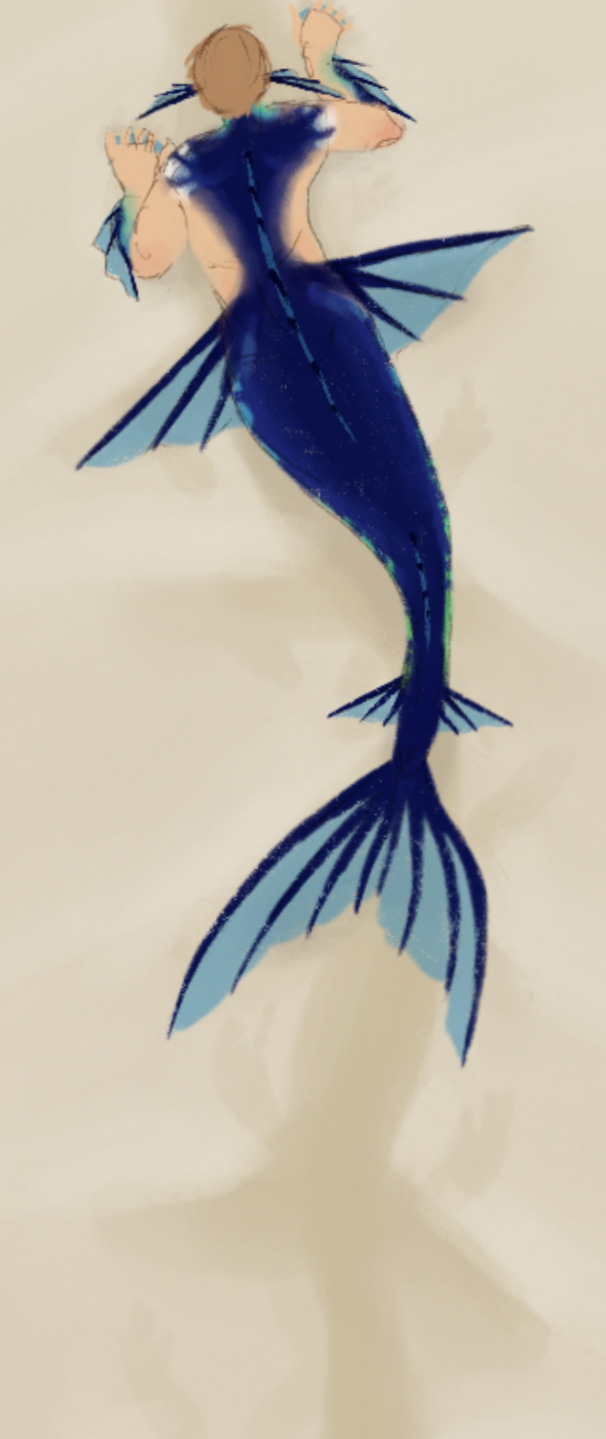

#resident evil#biohazard#leon kennedy#leon s kennedy#fanfic#ao3#my art#answer#question#mermaid au#mer leon#mermaid leon#merLeon#mermaid science#theoretical biology#mermaid#mermay
69 notes
·
View notes
Photo
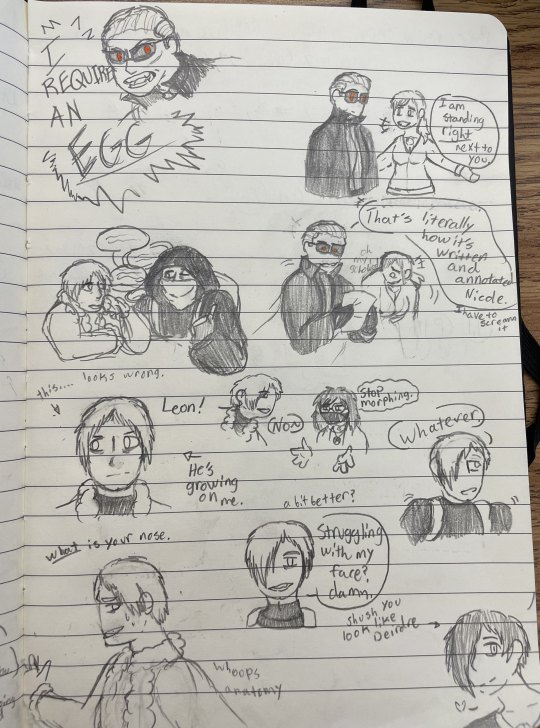


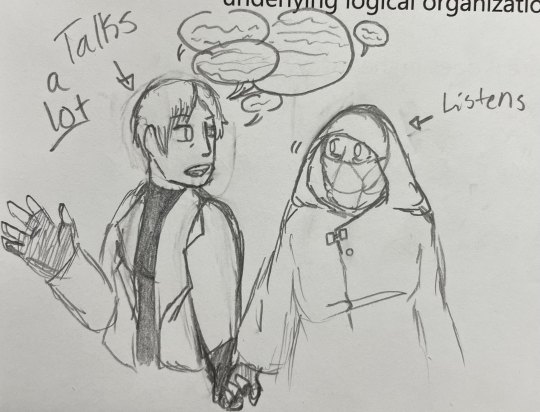



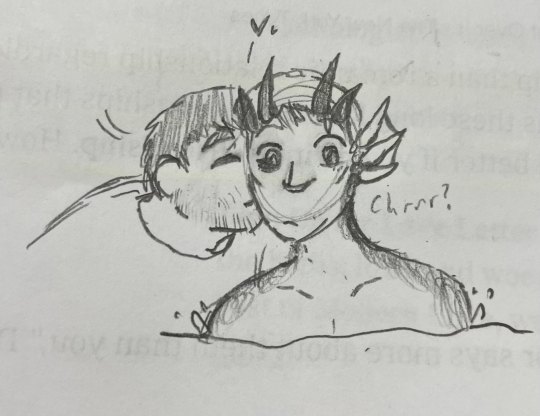


a pencil doodle dump ft. all the things I don’t think are worth posting on their own or didn’t want to digitalize
#my art#Resident Evil#mer!wesker#Leon S. Kennedy#Albert Wesker#Chris Redfield#The Merchant#RE4 Merchant#Leon/Merchant#Chrisker#We’ve got Chrisker- We’ve got whatever the hell Leon/Merchant is—#the mer!wesker doodles are bc I want them to kiss but it’s also so so funny watching the fic Aquarius’ Wesker cross#streams of “violence’ and “sex’ and getting “ah I want to kill this man because he makes me feel things’#that’s just Chrisker in general but it’s extra funny there#this post is catering to me and specifically me#rea’s trash
85 notes
·
View notes
Note
ok then... I desire your thoughts on mer!Leon. Go!
Omg wait.. i haven’t thought about this one before but!!!!!
He’s pretty, and he knows it
His shoulder length hair is so very blond, bleached from him lounging in the sun all day.
His tail is blue around the edges and more green/teal in the center.
His shoulders are broad and muscular and his skin is so tan (he’s Italian, of course he tans well)
Despite being confident and suave, he’s definitely a little shy when it comes to actually speaking to human women, and not just making eyes at them.
Speaking of his eyes, they’re such a deep blue, matching both his tail and his home
His top half is completely human, aside from a set of gills just below the curve of his jaw. Sometimes when you reach out to touch his face, your fingers brush against them and he shivers.
He’s adventurous, in every way possible, from asking you to meet him in the most beautiful secluded spots you’ve never knew existed, to the first time he asked to kiss you.
He wasn’t exactly sure how interspecies relations would work so he didn’t even bother thinking about it, but he has absolutely no problem eating pussy.
He’s so upset he can’t go live with you. As much as he hates to admit it, he fell in love with a human.
Brings you shells and little trinkets he finds to remember him by when you’re apart. First thing he brought you was a vase he had found bc he thought it was pretty. It was an ancient Roman amphora. The local authorities do not know you have an artifact on your dresser.
Another time he brought you “his hardest oyster stone”. It was a Nokia.
Loves to go on cute little dates with you
You rented a boat once and he begged to get up there with you, but as soon as he left the water he freaked out and jumped back in.
Maybe one day you’ll move to a small fishing village so the two of you can be as close as possible, who knows.
12 notes
·
View notes
Note
Why do I get the feeling that Mer!Leon is often attacked by birds and Mer!Danny has to save him from the birds a lot to the point of it being comical?
LMAO YES. My boy is pigeon bait— even when he's shifted above water.
Does Danny shoo them off of Leon? Yes. Does he, in return, also get swarmed? Yes, but not as often. He could easily bite the head off of one of them, in OR out of Mer form (which may be concerning on a few levels), but he doesn't because ew!! gross!!!
Leon is more likely to bite a bird in self defense (he wouldn't harm one otherwise), and Danny would be.. pretty disgusted.
#leon: *munch on bird*#danny: pls spit it out#i hc that Mer!Leon is a little bit feral#ghostleon#danny johnson#dead by daylight#leon kennedy#ghostface#leon s kennedy#au
14 notes
·
View notes
Text
Imagine merman!Dante and/or merman!Leon saving you from nearly drowning.
One minute, you're about to accept a watery fate...
The next, you're lying on the beach with two hot guys looking you over.
You're thankful they saved you, but something feels... Off.
8 notes
·
View notes
Text



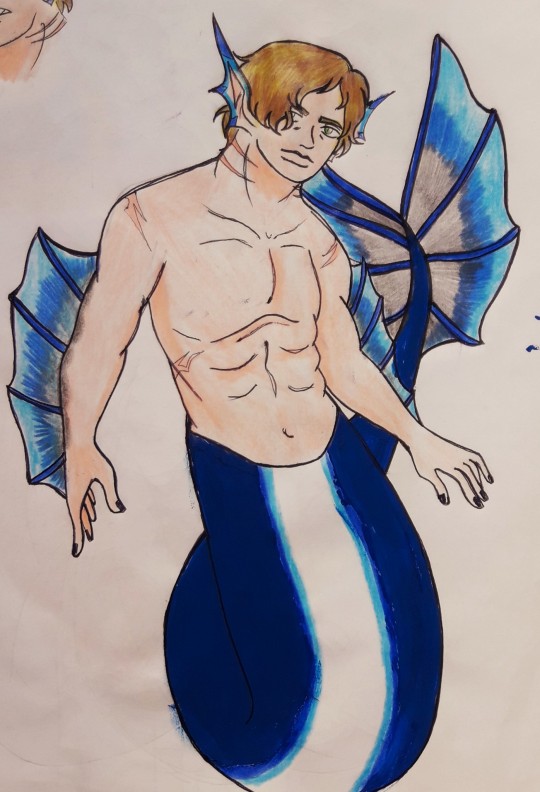
Well there he is...
12 notes
·
View notes
Text
Events 5.25
567 BC – Servius Tullius, the king of Rome, celebrates a triumph for his victory over the Etruscans.
240 BC – First recorded perihelion passage of Halley's Comet.
1085 – Alfonso VI of Castile takes Toledo, Spain, back from the Moors.
1420 – Henry the Navigator is appointed governor of the Order of Christ.
1521 – The Diet of Worms ends when Charles V, Holy Roman Emperor, issues the Edict of Worms, declaring Martin Luther an outlaw.
1644 – Ming general Wu Sangui forms an alliance with the invading Manchus and opens the gates of the Great Wall of China at Shanhaiguan pass, letting the Manchus through towards the capital Beijing.
1659 – Richard Cromwell resigns as Lord Protector of England following the restoration of the Long Parliament, beginning a second brief period of the republican government called the Commonwealth of England.
1660 – Charles II lands at Dover at the invitation of the Convention Parliament, which marks the end of the Cromwell-proclaimed Commonwealth of England, Scotland and Ireland and begins the Restoration of the British monarchy.
1738 – A treaty between Pennsylvania and Maryland ends the Conojocular War with settlement of a boundary dispute and exchange of prisoners.
1787 – After a delay of 11 days, the United States Constitutional Convention formally convenes in Philadelphia after a quorum of seven states is secured.
1798 – United Irishmen Rebellion: Battle of Carlow begins; executions of suspected rebels at Carnew and at Dunlavin Green take place.
1809 – Chuquisaca Revolution: Patriot revolt in Chuquisaca (modern-day Sucre) against the Spanish Empire, sparking the Latin American wars of independence.
1810 – May Revolution: Citizens of Buenos Aires expel Viceroy Baltasar Hidalgo de Cisneros during the "May Week", starting the Argentine War of Independence.
1819 – The Argentine Constitution of 1819 is promulgated.
1833 – The Chilean Constitution of 1833 is promulgated.
1865 – In Mobile, Alabama, around 300 people are killed when an ordnance depot explodes.
1878 – Gilbert and Sullivan's comic opera H.M.S. Pinafore opens at the Opera Comique in London.
1895 – Playwright, poet and novelist Oscar Wilde is convicted of "committing acts of gross indecency with other male persons" and sentenced to serve two years in prison.
1895 – The Republic of Formosa is formed, with Tang Jingsong as its president.
1914 – The House of Commons of the United Kingdom passes the Home Rule Bill for devolution in Ireland.
1925 – Scopes Trial: John T. Scopes is indicted for teaching human evolution in Tennessee.
1926 – Sholom Schwartzbard assassinates Symon Petliura, the head of the government of the Ukrainian People's Republic, which is in government-in-exile in Paris.
1935 – Jesse Owens of Ohio State University breaks three world records and ties a fourth at the Big Ten Conference Track and Field Championships in Ann Arbor, Michigan.
1938 – Spanish Civil War: The bombing of Alicante kills 313 people.
1940 – World War II: The German 2nd Panzer Division captures the port of Boulogne-sur-Mer; the surrender of the last French and British troops marks the end of the Battle of Boulogne.
1946 – The parliament of Transjordan makes Abdullah I of Jordan their Emir.
1953 – Nuclear weapons testing: At the Nevada Test Site, the United States conducts its first and only nuclear artillery test.
1953 – The first public television station in the United States officially begins broadcasting as KUHT from the campus of the University of Houston.
1955 – In the United States, a night-time F5 tornado strikes the small city of Udall, Kansas, killing 80 and injuring 273. It is the deadliest tornado to ever occur in the state and the 23rd deadliest in the U.S.
1955 – First ascent of Mount Kangchenjunga: On the British Kangchenjunga expedition led by Charles Evans, Joe Brown and George Band reach the summit of the third-highest mountain in the world (8,586 meters); Norman Hardie and Tony Streather join them the following day.
1961 – Apollo program: U.S. President John F. Kennedy announces, before a special joint session of the U.S. Congress, his goal to initiate a project to put a "man on the Moon" before the end of the decade.
1963 – The Organisation of African Unity is established in Addis Ababa, Ethiopia.
1966 – Explorer program: Explorer 32 launches.
1968 – The Gateway Arch in St. Louis, Missouri, is dedicated.
1973 – In protest against the dictatorship in Greece, the captain and crew on Greek naval destroyer Velos mutiny and refuse to return to Greece, instead anchoring at Fiumicino, Italy.
1977 – Star Wars (retroactively titled Star Wars: Episode IV – A New Hope) is released in theaters.
1977 – The Chinese government removes a decade-old ban on William Shakespeare's work, effectively ending the Cultural Revolution started in 1966.
1978 – The first of a series of bombings orchestrated by the Unabomber detonates at Northwestern University resulting in minor injuries.
1979 – John Spenkelink, a convicted murderer, is executed in Florida; he is the first person to be executed in the state after the reintroduction of capital punishment in 1976.
1979 – American Airlines Flight 191: A McDonnell Douglas DC-10 crashes during takeoff at O'Hare International Airport, Chicago, killing all 271 on board and two people on the ground.
1981 – In Riyadh, the Gulf Cooperation Council is created between Bahrain, Kuwait, Oman, Qatar, Saudi Arabia and the United Arab Emirates.
1982 – Falklands War: HMS Coventry is sunk by Argentine Air Force A-4 Skyhawks.
1985 – Bangladesh is hit by a tropical cyclone and storm surge, which kills approximately 10,000 people.
1986 – The Hands Across America event takes place.
1997 – A military coup in Sierra Leone replaces President Ahmad Tejan Kabbah with Major Johnny Paul Koroma.
1999 – The United States House of Representatives releases the Cox Report which details China's nuclear espionage against the U.S. over the prior two decades.
2000 – Liberation Day of Lebanon: Israel withdraws its army from Lebanese territory (with the exception of the disputed Shebaa farms zone) 18 years after the invasion of 1982.
2001 – Erik Weihenmayer becomes the first blind person to reach the summit of Mount Everest, in the Himalayas, with Dr. Sherman Bull.
2002 – China Airlines Flight 611 disintegrates in mid-air and crashes into the Taiwan Strait, with the loss of all 225 people on board.
2008 – NASA's Phoenix lander touches down in the Green Valley region of Mars to search for environments suitable for water and microbial life.
2009 – North Korea allegedly tests its second nuclear device, after which Pyongyang also conducts several missile tests, building tensions in the international community.
2011 – Oprah Winfrey airs her last show, ending her 25-year run of The Oprah Winfrey Show.
2012 – The SpaceX Dragon becomes the first commercial spacecraft to successfully rendezvous and berth with the International Space Station.
2013 – Suspected Maoist rebels kill at least 28 people and injure 32 others in an attack on a convoy of Indian National Congress politicians in Chhattisgarh, India.
2013 – A gas cylinder explodes on a school bus in the Pakistani city of Gujrat, killing at least 18 people.
2018 – The General Data Protection Regulation (GDPR) becomes enforceable in the European Union.
2018 – Ireland votes to repeal the Eighth Amendment of their constitution that prohibits abortion in all but a few cases, choosing to replace it with the Thirty-sixth Amendment of the Constitution of Ireland.
2020 – George Floyd, a black man, is murdered in Minneapolis, Minnesota, during an arrest when he is forced into a prone position face-down on the ground for more than nine minutes, provoking protests across the United States and around the world.
0 notes
Text
I'm tempted to make a Mer!Leon S Kennedy based on Monster Hunter's Narkarkos.
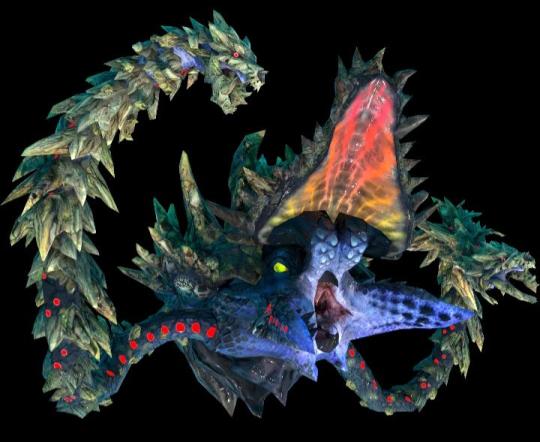
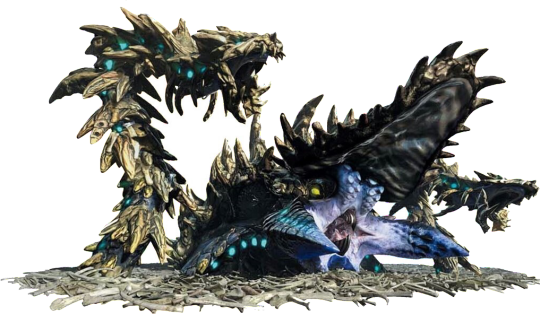
For those who don't play MH, Narkarkos is a 116 ft massive monster classified as an Elder Dragon with the title Corpse Dragon. Walking natural disasters that can devastate entire ecosystems and some even capable of world ending destruction. Narkarkos is one such force as its entire nest is made from its victims' bones but it also uses those very items for armor to even weapons.
There is a particular quest info in the Corpse Dragon's debut game, Monster Hunter Generations, where it devoured an entire village within one night leaving a single lucky survivor. Narkarkos is so dangerous that in Monster Hunter lore hunters need special permits just to hunt one and a sighting is immediate all hands on deck. You aren't even safe if the air or land either since its crafty enough to sink AIRSHIPS.
Perfect for Resident Evil verse as a bone cloak wearing squid/cuttlefish mer can fit right in alongside the undead hordes. Whether Leon will be a natural born who awakens into his nature, already lives a merman lifestyle or became one from viral infection is unknown. I can guarantee that he's a Leviathan type Mer around 169 ft in size and a huge disturbance ends up causing him to leave his den.
Blame Umbrella or another Resident Evil antagonist such as Simmons for Leon's emergence. Most of his body except for his head and upper chest are covered in bone armor with a massive skull from an unknown species being the Narkarkos Mer's shell. This skull is often mistaken for a 'bone island' since only those underwater can glimpse Leon's true appearance.
It mainly serves as cover or temporary shelter while the two smaller Mosasaurus skulls adorned at the end of his two main tentacles serve for attacks. Leon uses a sticky blue mucus to not only attach his armor and build his nest but also keep the bones from corroding alongside capturing prey.
A string of plane and ship disappearances already has the government on edge as they believe the cause is B.O.W related. It's only when a submarine alerts to base about a 'bone island' and a 'giant two headed dragon cover in bones' then communication is suddenly cut do they launch into action. The Redfield siblings are sent to investigate completely unaware of the real monster under those skeletal remains.
If anyone wants to write or draw using this Mer!Leon then go ahead. Honestly love to see what people can come up with! That's it for now! Until next time folks, continue to thrive in the wake of Raccoon City! Enjoy this Narkarkos boss fight alongside some basic and ecology info though!
Edit: I FINALLY found a vid that has all of the roars and attacks from our dear Corpse Dragon, especially the instant death laser. Someone better not piss off Narkarkos Mer!Leon or else they're literally getting the "IMA FIRIN MAH LAZOR" Shoop Da Whoop meme. Enjoy.
youtube

#sonicasura#resident evil series#resident evil#re series#biohazard#biohazard resident evil#resident evil leon#leon kennedy#leon s kennedy#leon scott kennedy#leon s. kennedy#mer!leon kennedy#mer leon kennedy#monster leon kennedy#monster!leon kennedy#mentioned fandoms#monster hunter#monster hunter generations ultimate#mhgu#narkarkos#mh narkarkos#Youtube
15 notes
·
View notes
Text

a little scene from @thebrandywine ‘s [pull me under]
#my fanart#leon kennedy#resident evil#mermaid au#i’m unwell about merpeople ok#and also about ponytail leon#we’re gonna get through it together#one day i’ll post canon adjacent art#one day……………#also mer piers is is here if you squint but i’ll refrain from the tag so as to not get people’s hopes up#over a silhouette cameo#pmu fanart
75 notes
·
View notes
Text
Real Economies and The Illusions of Abstraction by Hazel Henderson
The yawning gap between the real world and the discipline and profession of economics has never been wider. The ever-increasing abstractions in finance and its models based on "efficient markets" and "rational actors": capital asset pricing, Value-at-Risk, Black-Scholes Options Pricing have been awarded most of the Bank of Sweden prizes since they were founded in the 1960s and foisted onto the Nobel Prize Committee. Most of these abstract models, based on misuse of mathematics, contributed to the financial crises of 2007-2008. Now, the family of Alfred Nobel, led by lawyer Peter Nobel, has disassociated itself from the Bank of Sweden Prize in Economics In Memory of Alfred Nobel.1,* They point out that Nobel never would have approved of a prize in economics since it is not a science - and would have disapproved even more that most of the prizes were given to Western, neoclassical economists using mathematized, abstract models - far from Nobel's wider concerns.
Nowhere is this abstraction more devastating than in the mathematical compounding of interest rates on borrowed money, now sinking individuals, companies and nations in unrepayable debt as explored in lawyer Ellen Brown's Web of Debt (2007).
In The Politics of the Solar Age (1981, 1988), I warned that compound interest violated the Second Law of Thermodynamics:
"Much confusion arises because economics inappropriately analogizes from some of these models from the physical, social, and biological realms. For example, the best example of a "runaway" can be found in the hypothetical model that economists have imposed on the real world: compounded interest. Here, they have set up an a priori, positive feedback system (based on the value system of private property and its accumulation), in which the interest earned on a fixed quantity of money (capital) will be compounded and the next calculation of interest added on cumulatively. But this "runaway" accumulation process bears no relationship to the real world - only to the value system. However, it has profound real-world effects if enough people believe it is legitimate and employ lawyers, courts, etc., to enforce it!" (p. 228)
I also pointed out that Frederick Soddy, Nobel laureate in Chemistry, decided that economists' dangerous drift into pseudo-scientific abstraction must be halted before they destroyed industrial societies, because their uninformed ideas contravened the first and second laws of thermodynamics. (p. 225)
The mathematical fantasy that money is wealth and can reproduce itself is revealed again in the US housing and foreclosure crisis. Money is a useful information system for tracking our use of nature's resources and scoring the games we humans play, but it gradually became mistakenly equated with the real wealth of nations. Similarly, too often economists and politicians describe money flows in economies as analogous to the human body's circulatory system. Yet human blood's hemoglobin cells do not charge money or interest for the life-giving oxygen they deliver to every other cell in our bodies.
Charging interest for lending money was frowned on by our ancestors and considered a sin in Christian, Judaic as well as Islamic and other religious traditions. This view survives today in Sharia finance where lending at interest is shunned in favor of requiring the investor or creditor to share risks of any enterprise with the entrepreneur.
Generations of scholars since Aristotle's treatises on "just prices" have examined the myths and human experiments in creating money and systems of exchange, from mutual fund manager Stephen Zarlenga's "The Lost Science of Money" (2002) and Prof. Margrit Kennedy's "Interest and Inflation Free Money" (1995) to lawyer Ellen Brown's "Web of Debt" (2007). In my "Creating Alternative Futures", I posed the question: Is there any such thing as profit without some equal, unrecorded debt entry in some social or environmental ledger or passed on to future generations? My answer was "yes," provided all costs of production were internalized and thermodynamic, not economic, measures of efficiency were calculated.
The mismatch is between the real-world economies, where real people grow food, make shoes, clothes, shelter and tools in real factories, versus the human mind's tendencies toward abstraction. Understanding the real world in which we live requires us to recognize patterns and to abstract reality into mental models. The map is not the territory, as we have been reminded by many epistemologists. The danger is that we routinize our perception through these models, forgetting the need for constant updating and course-correcting as conditions change around us. Thus our mental models are memes that crystallize into habits, dogmas and outdated theories such as those in conventional economics and finance. These led to collective illusions: about "efficient markets," "humans as rational actors" and the lure of "compound interest" that still guide the decisions of too many asset managers. New models of triple bottom line accounting for Environmental, Social and Corporate Governance (ESG) have been adopted by responsible investors and institutional investors, including those engaged with the UN Principles of Responsible Investment, managing $22 trillion in assets. The current US mortgage and foreclosure mess provides a new teachable moment where we can re-examine the obsolete beliefs still at the core of economics and now refuted by physicists, endocrinologists, brain and behavioral scientists.2
The computerized efficiency of digitizing mortgages for rapid securitization in the Mortgage Electronic Registration System (MERS) is at the root of the foreclosure and toxic assets dilemma. We must examine how computers, when introduced into Wall Street, financial and housing markets drove economic theories further into mathematization, led by the Arrow-Debreu modeling of national economies in the 1960s, beyond earlier attempts by Leon Walras. Bank of Sweden Prizes in Memory of Alfred Nobel were given to Arrow and Debreu and others for mathematical models inappropriately applied to economics and finance.3 Similar mathematical models on which economists still rely, accept Arrow-Debreu's assumption of a process of "market completion" where markets could be extended to enclose ever more of the global commons: air, carbon emissions, water, forests, biodiversity, ecological assets and their productivity which supports all life. The newest commons are global communications infrastructure, the internet, the electromagnetic spectrum and space, all of which require massive public investments and underpin global finance and its extensive bailouts. The report of the Global Commission to Fund the UN, "The UN: Policy and Financing Alternatives", proposed taxing all commercial uses of the global commons and fines for misuse, including a tax on currency speculation. 4
For any market to efficiently allocate resources, buyers and sellers must have equal information and power, while their transactions should not harm any innocent bystanders. These conditions identified by Adam Smith in "The Wealth of Nations" in 1776 are now violated everywhere due to the scale and technological reach of global corporations and finance. Examples include the earliest forms of industrial pollution and exploitation of workers to today's toxic sludge dam failure in Hungary; BP's Gulf oil contamination and the growing costs in lives and ecological destruction of coal mining; the Wall Street volatility due to program trading; the financial meltdown of 2007-2008; the May 6, 2010 "flash crash," and the new revelations of US mortgage and foreclosure frauds. An ingenious enterprise, the Open Models Company (OMC) founded by Prof. Chuck Bralver at the Fletcher School of Tufts University, based on Linux principles, provides an open-source platform for global experts and critics in finance to examine the assumptions underlying derivatives and risk models - a huge help for underfunded regulators.5Mervyn King, head of the Bank of England, called for restructuring beyond Dodd-Frank, Basel III and other recent reforms of today's unsustainable "financial alchemy."6 King reflects most of the issues identified by experts in our Transforming Finance statement of September 13, 2010.
The scale of industrial and financial operations becomes global and ever more computerized and digitized, accelerating the abstraction of management, global supply chains, risk assessment, calculations of accountants for profits and losses, strategies of national governments and central bankers using defunct models such as NAIRU (non-accelerating inflation rate of unemployment) to set interest rates, along with subsidies, tax policies, and quantitative easing to "manage" their economies. All are based on levels of aggregation in statistical indicators akin to assessing national economies while over-flying a country's territory at 50,000 feet. The digitization of Wall Street and security analysis is cancelling out strategies for diversification of portfolios. In the post-Bretton Woods, turbulent global casino, the $3 trillion plus daily electronic trading of currencies and sovereign bonds are driven largely by speculation, credit default swaps, and high-frequency trader's algorithms. The proliferation of electronic trading platforms, credit cards and digital payment and credit systems bypass regulatory models of governments and central banks.
Today's ad hoc global financialization cannot be described as a system since it is still driven by the long-outdated assumptions and models in economics and the sloppy generalizations and categories that underlie economics and its theories: "capital" (not clearly defined); "growth" (GDP is the output of goods and services measured in money without subtracting social and environmental costs or adding the unpaid services in families and communities which support official paid production); "innovation" (does not distinguish between new brands of dog food, potato chips, credit default swaps vs. computer chips, gene sequencing or renewable energy); "productivity" (if measured as output per worker, this leads to further automation and technological unemployment); "free trade" (which led to the hollowing out of the US economy, outsourcing of jobs in manufacturing and services, trade deficits); "inflation" and "deflation." Statistical illusions: CPI, "core CPI" (which excludes energy and food), drives Fed policies, Social Security, taxes as well as employment and macroeconomic policies. **
Perhaps the most obvious policy errors were the models used by Alan Greenspan to describe the global economy in the dot com boom and by Ben Bernanke during the period from 2003-2006 as "The Great Moderation" (economic cycles had been tamed) and then, as the global imbalances grew, labeling them "the Global Glut of Savings" (China, Japan and other countries supposedly saved too much). Instead, I and others labeled this a growing global bubble of fiat currencies, led by the US dollar, acting as a global reserve currency. The crisis was one of macro-economic management - sinking under mounting deficits, debt and compound interest, while facing growing systemic risks due to deregulation in the global casino.
Nassim Nicholas Taleb pointed out all these conceptual errors in "Fooled by Randomness" (2005) and "The Black Swan" (2007), digging even deeper into the fallacies of the human mind, including confirmation bias, herd behavior and excessive optimism verified by behavioral psychologists. Mathematician Benoît Mandelbrot warned of the limits of statistical models of probability and risk informed by Gaussian normal distribution "bell curves." Fat tails, black swans and perfect storms entered the language, but instead of examining these human perceptual errors, they became excuses for Robert Rubin and his protégés, Larry Summers, Tim Geithner, as well as central bankers, Wall Street CEOs and asset managers - all claiming that "no one could have predicted the financial crises." As Richard Bookstaber described in "A Demon of Our Own Design", Wall Street's financial models were bound to fail.
The truth is that thousands of critics, scholars and market players, including the author accurately predicted and warned of the coming debacle - but were ignored by the leading elites in business, government and academia. 7,8 Mainstream media accepted conventional wisdom, funded by advertising from incumbent industries and their financial allies while their lobbyists took control of Congress. After the half-hearted reforms of Dodd-Frank, the IMF, the World Bank, the BIS and the G-20, how can a paradigm shift allow new voices, new models and more accurate modeling and control of systemic risk to emerge in the global financial system?
First, we must recognize the crises we face are not black swans, fat tails or perfect storms, but symptoms of our limited perception, fragmentary reductionist mindsets, models, research methods and academic curricula , particularly in economics and business schools. Second, we must move beyond economics to capture all their "externalities" in multi-disciplinary frameworks, systems models, multiple metrics and pluralistic research, such as that pioneered by the US Office of Technology Assessment (OTA) on whose founding Technology Assessment Advisory Council I was honored to serve from 1974 until 1980. This useful messenger, with its ground-breaking research, now copied in many countries, was decapitated by Congress in 1996 by Speaker Newt Gingrich and his Republican colleagues. Luckily, OTA's studies are still highly relevant and archived at Princeton University and the University of Maryland. Signs of awakening include new memes, including describing fragmented approaches as "silos" and narrow research as "stovepipe information" with frequent calls to "connect the dots."
Equally urgent are the phasing out of all the hundreds of billions of dollars of perverse subsidies propping up obsolete, incumbent companies and industries still blocking the emergence of cleaner, greener information-rich technologies and new companies. Governments' conceptual confusion over climate issues is evident in still subsidizing carbon-based industries while at the same time trying to cap and price carbon emissions. This Green Transition to the Solar Age is underway as we gradually exit the earlier, fossil-fueled Industrial Era. Ethical Markets Media measures private investments since 2007 in solar, wind, energy efficiency, renewables and smart infrastructure worldwide in our Green Transition Scoreboard®.++
Meanwhile, a below 1% financial transaction tax on all transactions can curb high frequency trading and currency speculators, limit positions by hedge funds and other institutional investors - while sparing legitimate hedging by commercial firms. Such long-debated taxes proposed by James Tobin in the 1970s and Larry Summers in his 1989 paper are now supported by the EU and are on the G-20's agenda. 9,10
To finally correct our money-creation ceded to private banks by Congress in 1913 through the Federal Reserve system, Congress could enact the Monetary Reform Act long proposed and vetted by seasoned market veterans of the American Monetary Institute. This would entail a rolling readjustment in money issuance - now obviously dysfunctional under the Fed and private banks, and return it to a public function as in the US Constitution. Meantime, many states could adopt state banking as in North Dakota, the only state with a surplus and full employment - unharmed by the depredations of Wall Street extractions from Main Street.$$
I agree with others from E.F. Schumacher, author of "Small is Beautiful" (1973), Simon Johnson, author of "13 Bankers" (2009), Laurence Kotlikoff, author of "Jimmy Stewart is Dead" (2009) to Nassim Nicholas Taleb: if systems are too large and interconnected to manage and banks are "too big to fail," then they need to be carefully dismantled and decentralized to restore diversity and resilience following nature's design principles. Monetary monocultures now on a global scale have demonstrably failed. Healthy, homegrown, local economies need protection from global bankers and their casino. Complementary local currencies and peer-to-peer finance are flourishing. && Bloated financial sectors can be downsized and returned to their role of serving real economies. In the USA, small non-profit community development finance institutions (CDFIs) are growing to fill the needs of micro-businesses.11
Trickle down economics has failed utterly, even as the politicians and central bankers still believe that pouring taxpayers funds and printed money into big banks and bloated financial sectors will somehow trickle down to Main Street and local businesses. Instead of creating US jobs, the rest of us see the Wall Street traders and big asset managers investing these funds in China, India, Brazil and other emerging markets where US multinationals have shifted their plants, jobs and research. Worse still, big banks take the Fed's funds and rather than lending to Main Street, use it for gambling on currencies, oil, interest rates and other derivatives. All this money-creation is fueling currency wars. Hopefully, all this together with ballooning debts, deficits and un-repayable compound interest, the foreclosure and mortgage securitization scandals and auditing Fannie, Freddie and the Fed, will provide enough evidence to Washington and voters in many countries of the needed paradigm shift and new policies.
Calls in the USA for facing up to these painful truths are coming from all sides, from Republicans including Congressman Ron Paul to Democrats including Congressman Dennis Kucinich and Independents including Senators Bernie Sanders and Byron Dorgan. Indeed, Republicans and Democrats are now both minority parties as most voters are now independents.
Exposing all the statistic illusions, inoperative models, dysfunctional economic dogmas - including their unsustainable offspring: debt-based money and compound interest - can begin the Green Transition to the emerging economies of the 21st century. The new coalition is now visible: responsible and green investors and companies, environmentalists, Millennials, progressive labor unions and their pension funds, students, independent media and voters, systems thinkers, futurists and academics pioneering new courses in sustainability, as well as dispossessed homeowners, jobless workers, professionals and veterans eager to put their skills to work - all are ready to help grow the green economies of the future.
Notes
Peter Söderbaum, "Nobel Prize in Economics Diminishes the Value of Other Nobel Prizes" Dagens Nyheter, October 10, 2004.
Hazel Henderson, "The Cuckoo's Egg in the Nobel Prize Nest, " Inter Press Service, October 2006.
Hazel Henderson, "Abolish the 'Nobel' in Economics? Many Scientists Agree, " Inter Press Service, 2004.
Harlan Cleveland, Hazel Henderson and Inge Kaul, eds., The UN: Policy and Financing Alternatives (London: Elsevier Science Press, 1995).
Don Tapscott and Anthony Williams, Macrowikinomics (London: Penguin, 2010).
"King plays God" The Economist, October 26, 2010.
Hazel Henderson, Building a Win-Win World (San Francisco: Berrett-Koehler, 1996).
Hazel Henderson, "New Markets and New Commons," Futures 27, no.2 (1995):113-124.
Larry Summers and Victoria Summers, "When Financial Markets Work Too Well: A cautious case for a securities transactions tax" Journal of Financial Services Research 3, no. 2-3 (1989): 261-286.
Hazel Henderson, "Financial Transaction Taxes: The Common Sense Approach" Responsible Investor, October 19, 2010.
Mark Pinsky, "Help for Small Businesses: Loans are just a start" Businessweek, Oct. 25, 2010.
Source: http://www.cadmusjournal.org/node/93
PDF: http://www.cadmusjournal.org/files/pdfreprints/vol1issue3/Reprint_Hazel_Henderson_Real_Economies.pdf
0 notes
Note
MerNakarkos!Leon makes a pairing with Claire Redfield really funny. A ‘verse where the relationship works out and poor Chris is conflicted.
When your sister falls in love with a giant eldritch merman who wears the bones of his prey. Chris does his best to slowly accept the reality that his life is no longer even close to normal. Zombies are one thing but this? At least Claire is VERY safe.
His sanity? Not really.

#sonicasura#sonicasura answers#asks#thecourtofgraywaves#re series#resident evil series#resident evil#biohazard#biohazard resident evil#leon kennedy#leon scott kennedy#leon s kennedy#leon s. kennedy#claire redfield#cleon#leon x claire#chris redfield#mer leon kennedy#mer!leon kennedy#narkarkos#mh narkarkos
2 notes
·
View notes
Text

*yeets this WIP*
I haven't drawn fish bones before and non-human skulls are a slight weakness of mine. But here's the current progress for my Narkarkos Mer!Leon. You probably won't be seeing much of his smaller cuttlefish like tentacles and any stuff below his breasts since they'll be covered in bone plating.
Also the kilt/skirt is primarily fish made from fish parts as Leon is a bit picky about what he uses in each "clothing" article. I'll do some face sketches on a different page. For now, just picture him wrestling an unknown deep sea predator, capsize a ship or kidnap someone like an aquatic Bowser.
Leon probably done since he looks done with the world 80% of the time.
#sonicasura#wips#resident evil series#resident evil#re series#biohazard resident evil#biohazard#leon scott kennedy#leon kennedy#mer leon kennedy#mer!leon kennedy#leon s. kennedy#leon s kennedy#monster leon kennedy#monster!leon kennedy
4 notes
·
View notes
Text
Hey guys! I want to throw in this quick update for you folks.
If you haven't noticed or are new to this blog, polls are a something I been doing. Now sometimes a poll doesn't exactly go well for different reasons. Part of this being people don't notice until it's too late as some older polls closed have been getting likes.
I want to announce that I'll be redoing older polls. Like with the all the others, you have a week to vote. So far, there are two in mind that I will be doing soon.
Price to Save Resident Evil Edition
First's Residual Reincarnation (Linked Universe/LoZ)
For anyone in the Resident Evil fandom, specifically a fan of Leon S. Kennedy, there is an active poll for you guys here! A familiar situation with one of my favorite bosses from a childhood series: Kirby. If you haven't noticed, I like bullying this man a lot.
Some of other RE characters will get the same treatment as I go deeper into the series. You probably find Luis, Chris, Ashley and a few others some day but for now Mr Kennedy is my poll test dummy. Speaking of Leon, I'm still working on his Narkarkos Mer design.
You might see me drop a headcanon set about him later today or tomorrow. That's all the updates I have for now! Have a great day and I'll see you later.

#sonicasura#personal update#my polls#mentioned fandoms#resident evil#resident evil series#re series#biohazard#biohazard resident evil#mentioned characters#leon scott kennedy#leon s kennedy#leon s. kennedy#leon kennedy
4 notes
·
View notes
Text

"part of your world~!!"
Have some Mer! Leon Kennedy
(somewhere off screen, Claire is probably laughing)
#resident evil#leon s kennedy#leon kennedy#merman#leon scott kennedy#leonscottkennedy#mermaid#the little mermaid#parody
5 notes
·
View notes